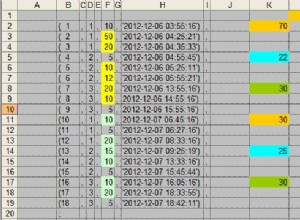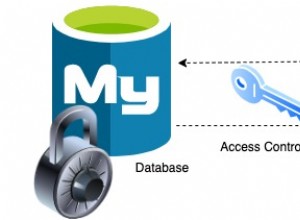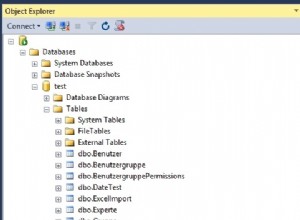CREATE DEFINER = 'root'@'localhost'
PROCEDURE test.GetHierarchyUsers(IN StartKey INT)
BEGIN
-- prepare a hierarchy level variable
SET @hierlevel := 00000;
-- prepare a variable for total rows so we know when no more rows found
SET @lastRowCount := 0;
-- pre-drop temp table
DROP TABLE IF EXISTS MyHierarchy;
-- now, create it as the first level you want...
-- ie: a specific top level of all "no parent" entries
-- or parameterize the function and ask for a specific "ID".
-- add extra column as flag for next set of ID's to load into this.
CREATE TABLE MyHierarchy AS
SELECT U.ID
, U.Parent
, U.`name`
, 00 AS IDHierLevel
, 00 AS AlreadyProcessed
FROM
Users U
WHERE
U.ID = StartKey;
-- how many rows are we starting with at this tier level
-- START the cycle, only IF we found rows...
SET @lastRowCount := FOUND_ROWS();
-- we need to have a "key" for updates to be applied against,
-- otherwise our UPDATE statement will nag about an unsafe update command
CREATE INDEX MyHier_Idx1 ON MyHierarchy (IDHierLevel);
-- NOW, keep cycling through until we get no more records
WHILE @lastRowCount > 0
DO
UPDATE MyHierarchy
SET
AlreadyProcessed = 1
WHERE
IDHierLevel = @hierLevel;
-- NOW, load in all entries found from full-set NOT already processed
INSERT INTO MyHierarchy
SELECT DISTINCT U.ID
, U.Parent
, U.`name`
, @hierLevel + 1 AS IDHierLevel
, 0 AS AlreadyProcessed
FROM
MyHierarchy mh
JOIN Users U
ON mh.Parent = U.ID
WHERE
mh.IDHierLevel = @hierLevel;
-- preserve latest count of records accounted for from above query
-- now, how many acrual rows DID we insert from the select query
SET @lastRowCount := ROW_COUNT();
-- only mark the LOWER level we just joined against as processed,
-- and NOT the new records we just inserted
UPDATE MyHierarchy
SET
AlreadyProcessed = 1
WHERE
IDHierLevel = @hierLevel;
-- now, update the hierarchy level
SET @hierLevel := @hierLevel + 1;
END WHILE;
-- return the final set now
SELECT *
FROM
MyHierarchy;
-- and we can clean-up after the query of data has been selected / returned.
-- drop table if exists MyHierarchy;
END
Nó có vẻ cồng kềnh, nhưng để sử dụng nó, hãy làm
call GetHierarchyUsers( 5 );
(hoặc bất kỳ ID khóa nào bạn muốn LÊN cây phân cấp).
Tiền đề là bắt đầu với một KEY bạn đang làm việc. Sau đó, sử dụng điều đó làm cơ sở để tham gia vào bảng người dùng LẠI, nhưng dựa trên ID PHỤ HUYNH của mục nhập đầu tiên. Sau khi tìm thấy, hãy cập nhật bảng tạm thời để không thử và tham gia lại cho khóa đó vào chu kỳ tiếp theo. Sau đó, tiếp tục cho đến khi không tìm thấy khóa ID "mẹ" nào nữa.
Điều này sẽ trả lại toàn bộ hệ thống phân cấp của các bản ghi cho đến cha mẹ bất kể việc lồng sâu đến mức nào. Tuy nhiên, nếu bạn chỉ muốn cha mẹ CUỐI CÙNG, bạn có thể sử dụng biến @hierlevel để chỉ trả về biến mới nhất trong tệp đã thêm hoặc ORDER BY và LIMIT 1




